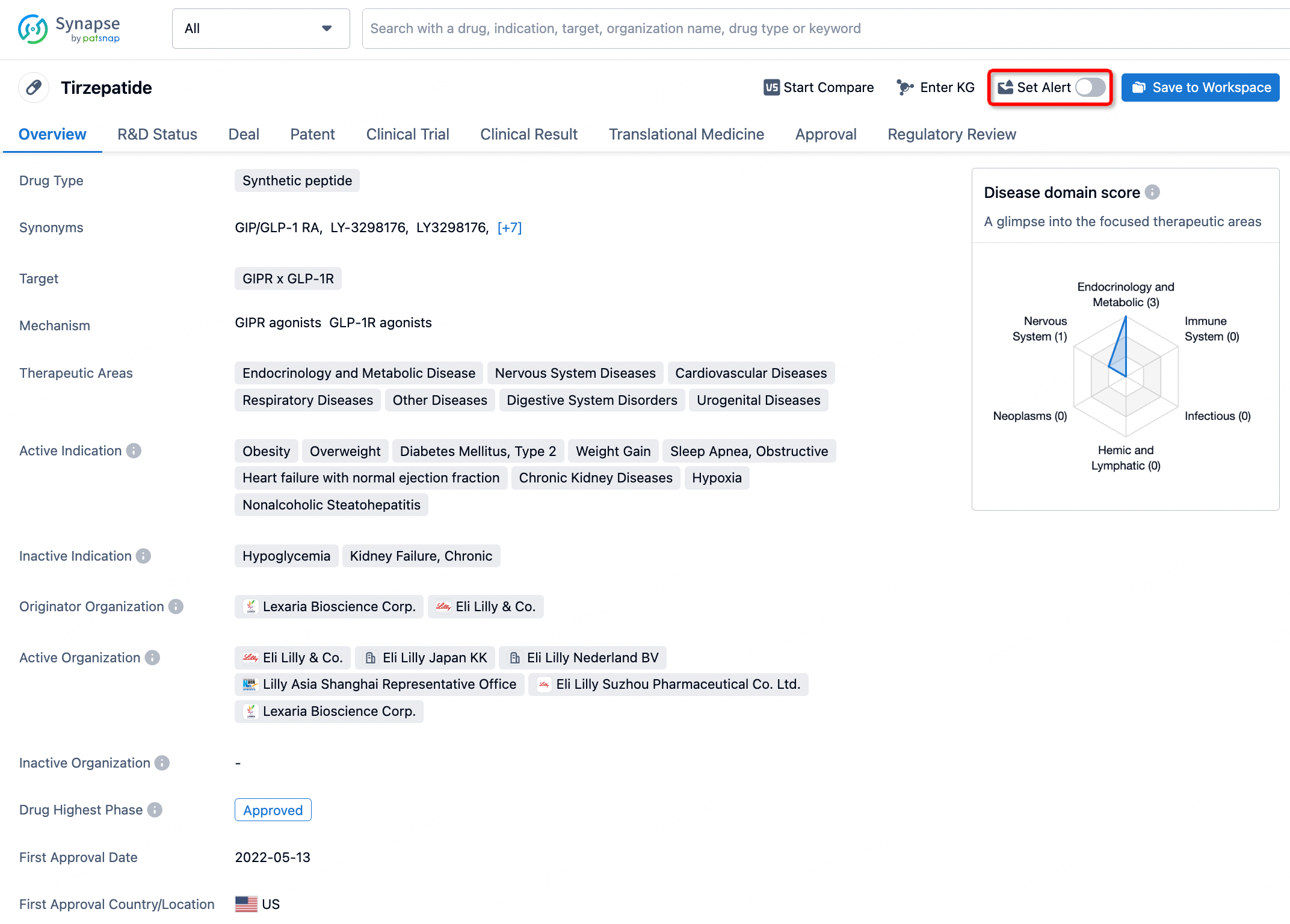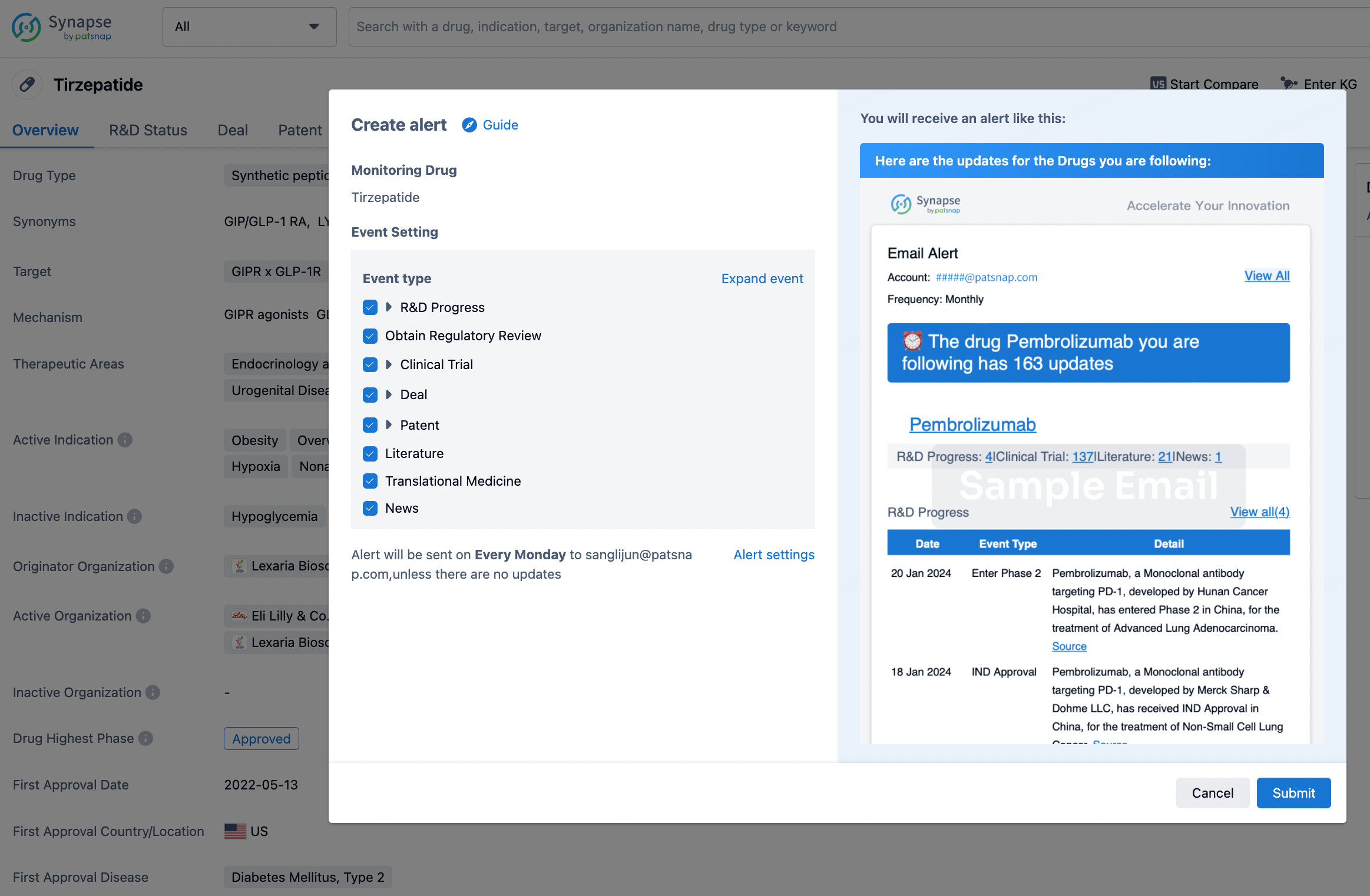Request Demo
What is Pomalidomide used for?
14 June 2024
Pomalidomide is an immunomodulatory drug that has garnered significant attention in recent years for its promising therapeutic potential. Marketed under the trade name Pomalyst in the United States and Imnovid in Europe, Pomalidomide is primarily utilized in the treatment of multiple myeloma, a form of blood cancer. Originally developed by Celgene Corporation, which has since been acquired by Bristol-Myers Squibb, the drug is a thalidomide analogue, reflecting a broader spectrum of immunomodulatory and anti-cancer activities. Since its approval by the U.S. Food and Drug Administration (FDA) in 2013, Pomalidomide has been increasingly incorporated into treatment regimens for multiple myeloma patients, particularly those who have not responded to other therapies.
Pomalidomide specifically targets malignant cells by disrupting their growth and survival mechanisms. In addition to multiple myeloma, ongoing research is exploring its efficacy in other hematologic malignancies and solid tumors, although these applications are still in the investigational stages. With its potent anti-cancer properties and expanding scope of application, Pomalidomide remains a focal point of both clinical and preclinical research.
Pomalidomide Mechanism of Action
The mechanism of action of Pomalidomide is intricate and multifaceted, involving several pathways that collectively contribute to its anti-cancer effects. One of the primary mechanisms is its ability to modulate the immune system. Pomalidomide stimulates T-cells and natural killer (NK) cells, enhancing the body’s immune response against cancer cells. It also inhibits certain cytokines like interleukin-6 (IL-6), which are involved in the survival and proliferation of multiple myeloma cells.
Another crucial aspect of Pomalidomide's mechanism is its direct anti-proliferative and pro-apoptotic effects on cancer cells. The drug binds to cereblon, a protein that forms part of an E3 ubiquitin ligase complex. This binding leads to the degradation of specific transcription factors such as Ikaros (IKZF1) and Aiolos (IKZF3), which are essential for the growth and survival of myeloma cells. By degrading these factors, Pomalidomide effectively impairs the cells' ability to proliferate and survive.
Furthermore, Pomalidomide exerts anti-angiogenic properties, inhibiting the formation of new blood vessels that supply nutrients to the tumor. This is accomplished through the downregulation of vascular endothelial growth factor (VEGF) and other angiogenic factors. By disrupting the tumor’s blood supply, Pomalidomide starves the cancer cells of essential nutrients, further contributing to their death.
How to Use Pomalidomide
Pomalidomide is administered orally in the form of capsules. It is typically prescribed as part of a combination therapy, often in conjunction with dexamethasone, a corticosteroid that enhances its efficacy. The standard dosing regimen usually involves taking Pomalidomide once daily on specific days of a 28-day cycle, often days 1 through 21, followed by a 7-day rest period. This cycle is repeated until the disease progresses or the patient can no longer tolerate the treatment.
The onset time for Pomalidomide's effects can vary, but patients may start to see improvements within a few weeks to a couple of months after initiating therapy. However, it’s important to note that achieving maximum therapeutic benefit often requires several cycles of treatment, and continuous monitoring by healthcare providers is essential to assess efficacy and manage any adverse effects.
Pomalidomide should be taken with water, either with or without food, and the capsules should not be broken, chewed, or opened. Due to the drug’s potential teratogenic effects, women of childbearing potential must adhere to stringent contraceptive measures before, during, and after treatment. Men taking Pomalidomide should also use effective contraception, as the drug can be present in seminal fluid.
What is Pomalidomide Side Effects
Like all medications, Pomalidomide comes with a range of possible side effects. Common side effects include fatigue, anemia, neutropenia (low levels of neutrophils, a type of white blood cell), thrombocytopenia (low platelet count), constipation, nausea, and diarrhea. Most of these side effects are manageable with supportive care and dose adjustments, though they can be severe in some cases.
Serious side effects include an increased risk of thromboembolism, such as deep vein thrombosis (DVT) and pulmonary embolism (PE). Patients on Pomalidomide are often prescribed anticoagulants to mitigate this risk. Other serious adverse effects include severe infections, liver toxicity, and allergic reactions, which may necessitate discontinuation of the drug.
Pomalidomide is contraindicated in pregnant women due to its high teratogenic risk, similar to its predecessor thalidomide. It is also contraindicated in patients with a known hypersensitivity to the drug or any of its components. Because of the risk of secondary malignancies, patients should be regularly monitored for signs of new cancers.
What Other Drugs Will Affect Pomalidomide
Pomalidomide can interact with various other medications, potentially altering its efficacy and safety profile. One of the most significant interactions is with strong CYP1A2 inhibitors and inducers. Drugs such as fluvoxamine (a strong CYP1A2 inhibitor) can increase Pomalidomide levels in the blood, heightening the risk of adverse effects. Conversely, CYP1A2 inducers like omeprazole may reduce Pomalidomide levels, diminishing its therapeutic efficacy.
Concomitant use of anticoagulants, such as warfarin, requires careful monitoring due to the increased risk of bleeding. The combined use of Pomalidomide and other immunosuppressive or cytotoxic agents may also elevate the likelihood of severe infections and bone marrow suppression. Patients should avoid using herbal supplements and over-the-counter medications without consulting their healthcare provider, as these can also interact with Pomalidomide.
In conclusion, Pomalidomide represents a significant advancement in the treatment of multiple myeloma and other potential indications. Understanding its mechanism of action, proper administration, potential side effects, and drug interactions is crucial for maximizing its therapeutic benefits while minimizing risks. As research continues, Pomalidomide’s role in cancer treatment will hopefully expand, offering new hope to patients battling this challenging disease.
Pomalidomide specifically targets malignant cells by disrupting their growth and survival mechanisms. In addition to multiple myeloma, ongoing research is exploring its efficacy in other hematologic malignancies and solid tumors, although these applications are still in the investigational stages. With its potent anti-cancer properties and expanding scope of application, Pomalidomide remains a focal point of both clinical and preclinical research.
Pomalidomide Mechanism of Action
The mechanism of action of Pomalidomide is intricate and multifaceted, involving several pathways that collectively contribute to its anti-cancer effects. One of the primary mechanisms is its ability to modulate the immune system. Pomalidomide stimulates T-cells and natural killer (NK) cells, enhancing the body’s immune response against cancer cells. It also inhibits certain cytokines like interleukin-6 (IL-6), which are involved in the survival and proliferation of multiple myeloma cells.
Another crucial aspect of Pomalidomide's mechanism is its direct anti-proliferative and pro-apoptotic effects on cancer cells. The drug binds to cereblon, a protein that forms part of an E3 ubiquitin ligase complex. This binding leads to the degradation of specific transcription factors such as Ikaros (IKZF1) and Aiolos (IKZF3), which are essential for the growth and survival of myeloma cells. By degrading these factors, Pomalidomide effectively impairs the cells' ability to proliferate and survive.
Furthermore, Pomalidomide exerts anti-angiogenic properties, inhibiting the formation of new blood vessels that supply nutrients to the tumor. This is accomplished through the downregulation of vascular endothelial growth factor (VEGF) and other angiogenic factors. By disrupting the tumor’s blood supply, Pomalidomide starves the cancer cells of essential nutrients, further contributing to their death.
How to Use Pomalidomide
Pomalidomide is administered orally in the form of capsules. It is typically prescribed as part of a combination therapy, often in conjunction with dexamethasone, a corticosteroid that enhances its efficacy. The standard dosing regimen usually involves taking Pomalidomide once daily on specific days of a 28-day cycle, often days 1 through 21, followed by a 7-day rest period. This cycle is repeated until the disease progresses or the patient can no longer tolerate the treatment.
The onset time for Pomalidomide's effects can vary, but patients may start to see improvements within a few weeks to a couple of months after initiating therapy. However, it’s important to note that achieving maximum therapeutic benefit often requires several cycles of treatment, and continuous monitoring by healthcare providers is essential to assess efficacy and manage any adverse effects.
Pomalidomide should be taken with water, either with or without food, and the capsules should not be broken, chewed, or opened. Due to the drug’s potential teratogenic effects, women of childbearing potential must adhere to stringent contraceptive measures before, during, and after treatment. Men taking Pomalidomide should also use effective contraception, as the drug can be present in seminal fluid.
What is Pomalidomide Side Effects
Like all medications, Pomalidomide comes with a range of possible side effects. Common side effects include fatigue, anemia, neutropenia (low levels of neutrophils, a type of white blood cell), thrombocytopenia (low platelet count), constipation, nausea, and diarrhea. Most of these side effects are manageable with supportive care and dose adjustments, though they can be severe in some cases.
Serious side effects include an increased risk of thromboembolism, such as deep vein thrombosis (DVT) and pulmonary embolism (PE). Patients on Pomalidomide are often prescribed anticoagulants to mitigate this risk. Other serious adverse effects include severe infections, liver toxicity, and allergic reactions, which may necessitate discontinuation of the drug.
Pomalidomide is contraindicated in pregnant women due to its high teratogenic risk, similar to its predecessor thalidomide. It is also contraindicated in patients with a known hypersensitivity to the drug or any of its components. Because of the risk of secondary malignancies, patients should be regularly monitored for signs of new cancers.
What Other Drugs Will Affect Pomalidomide
Pomalidomide can interact with various other medications, potentially altering its efficacy and safety profile. One of the most significant interactions is with strong CYP1A2 inhibitors and inducers. Drugs such as fluvoxamine (a strong CYP1A2 inhibitor) can increase Pomalidomide levels in the blood, heightening the risk of adverse effects. Conversely, CYP1A2 inducers like omeprazole may reduce Pomalidomide levels, diminishing its therapeutic efficacy.
Concomitant use of anticoagulants, such as warfarin, requires careful monitoring due to the increased risk of bleeding. The combined use of Pomalidomide and other immunosuppressive or cytotoxic agents may also elevate the likelihood of severe infections and bone marrow suppression. Patients should avoid using herbal supplements and over-the-counter medications without consulting their healthcare provider, as these can also interact with Pomalidomide.
In conclusion, Pomalidomide represents a significant advancement in the treatment of multiple myeloma and other potential indications. Understanding its mechanism of action, proper administration, potential side effects, and drug interactions is crucial for maximizing its therapeutic benefits while minimizing risks. As research continues, Pomalidomide’s role in cancer treatment will hopefully expand, offering new hope to patients battling this challenging disease.
How to obtain the latest development progress of all drugs?
In the Synapse database, you can stay updated on the latest research and development advances of all drugs. This service is accessible anytime and anywhere, with updates available daily or weekly. Use the "Set Alert" function to stay informed. Click on the image below to embark on a brand new journey of drug discovery!
AI Agents Built for Biopharma Breakthroughs
Accelerate discovery. Empower decisions. Transform outcomes.
Get started for free today!
Accelerate Strategic R&D decision making with Synapse, PatSnap’s AI-powered Connected Innovation Intelligence Platform Built for Life Sciences Professionals.
Start your data trial now!
Synapse data is also accessible to external entities via APIs or data packages. Empower better decisions with the latest in pharmaceutical intelligence.


